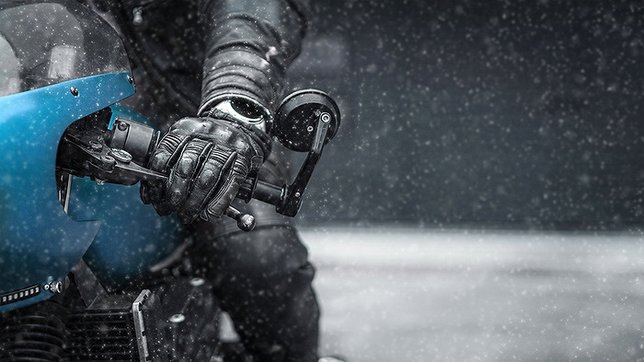There’s no doubt that motorcycle riding provides a unique thrill of the open road that attracts enthusiasts of all ages, but with the excitement that this intense activity provides also comes added risk, as riders – with precious little between their bodies and the asphalt – don’t enjoy the same level of protection that automobile drivers enjoy.
This risk is only amplified as colder weather comes into play, as a new series of challenges are added, ranging from how your motorcycle performs in relation to the roadway to how your body reacts to the drop in temperature, among numerous other factors.
Clearly, riding in colder months requires careful consideration and planning to ensure safety is maintained at all times; in contrast, a lack of planning and taking proper precautions can result in serious injury and even death, so taking cold weather riding seriously is absolutely essential.
Both the rider and the motorcycle are affected during cold weather; as for the bike, tire traction can be reduced significantly amid low temperatures, making handling far more difficult. Therefore, making sure your tire pressure is correct – cold air can cause tires to harden and lose grip – and that your tread is not worn down so that it grips the roadway adequately is a paramount concern.
The engine of your motorcycle can also be impacted by cold weather; your battery and motor oil can be especially susceptible to reduced temperatures, leading to issues with starting – potentially leaving you stranded – and overall performance. To avoid these problems, keeping up with your motorcycle’s maintenance – either by doing so yourself if you are experienced, or by visiting a mechanic – is a very good idea.
However, your wheels aren’t the only thing impacted by cold weather; the human body also experiences drawbacks when the winter chill hits, perhaps even more so. With the cold comes decreased physical reaction times and the potential for hypothermia if a rider is not adequately dressed to conserve their body heat. To that end, a rider should layer their clothing – including insulating layers with a wind/waterproof outer layer, and perhaps even heated gear – and wear insulated gloves.
And also always make sure to wear a well-fitted, full-face covering helmet that features a fog-resistant visor.
In addition, winter brings with it shorter daylight hours and as a result, motorcycle riders – and the other motorists they share the road with – often encounter reduced visibility, so to combat that malady, make sure that your bike’s lights are functioning properly, as well as always wearing reflective gear to increase your visibility profile on the street.
Even the type of riding you engage in during the winter bears consideration; going on shorter trips on well-traveled roads is advisable in the event that an emergency is encountered. It’s also always good to inform a friend or loved one of the locations you’ll be riding in and when they can expect you to return.
Adjusting your riding style Is also a great idea, such as keeping your speed slower and allowing more space between you and the vehicles ahead for braking. In addition, also try to avoid sudden movements that could result in skidding, especially during hazardous road conditions involving rain, ice, or snow.
Situational awareness is also key, as being very aware of your surroundings at all times can give you the time and wherewithal to react to the unexpected.
In addition to fun, excitement, and an unbridled sense of freedom, there are also many unique challenges and risks associated with motorcycle riding, especially in the colder months. If you are a motorcycle rider and have experienced an accident, it’s important to consult with an experienced, knowledgeable law firm in order to find out what options are available to you in order to make yourself whole once again.
Are you or someone you know a motorcycle rider that has recently been in an accident? Contact the accident attorneys at the Law Office of Cohen & Jaffe, LLP at 866-878-6774 now or fill out our simple form for a free consultation.










